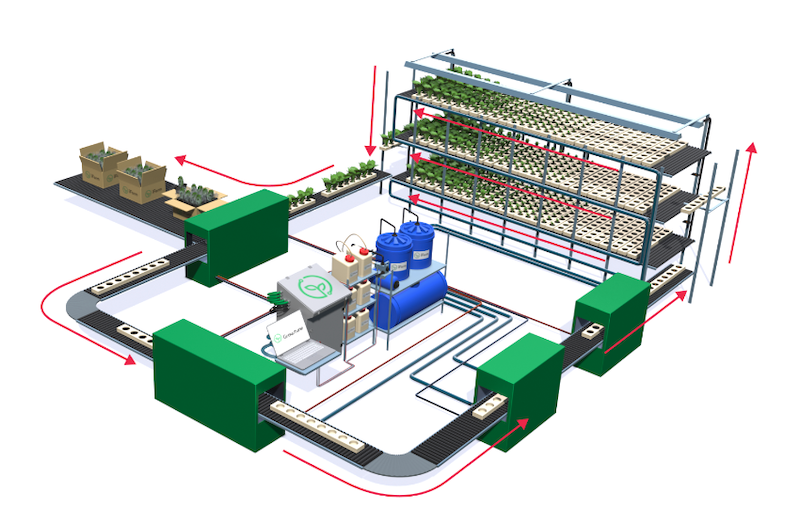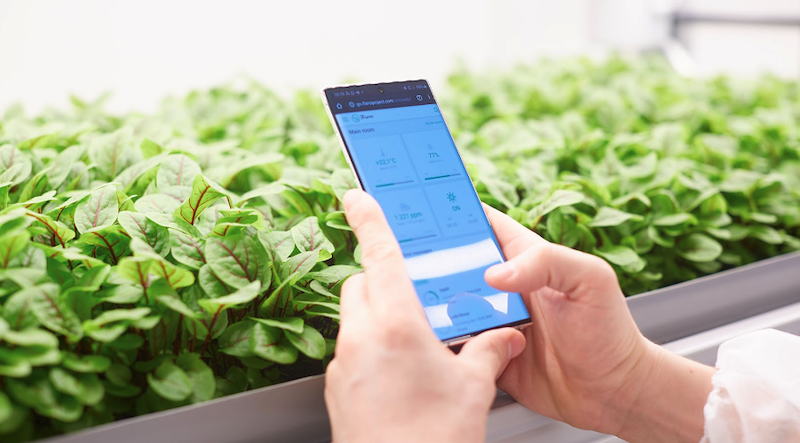Future of Agriculture: What Does Automated Vertical Farming Look Like?
Today, automation is revolutionizing productivity and bringing other benefits across almost all industries. Agriculture is also shifting from manual labor towards a highly automated model where almost no workers are required on site.
Challenges faced by conventional agriculture such as limited water resources and farmland have facilitated the development of high-tech greenhouses and indoor vertical farms.
They, in turn, spurred smart technologies for professional cultivation in controlled environments.
Automated indoor farming makes use of modern technologies such as sensors, big data, vertical farming robotics and AI-powered software to increase yield, reduce costs and minimize environmental impact.
In this post, we will look into the automation technologies in vertical farming and why they are transforming the food production landscape right now.

How does automated vertical farming work?
The first level of automation in vertical farming is about the farm’s operation. In manual or semi-automated vertical farms, the crops are normally grown on static vertical multi-level racks, and all the essential processes including moving trays, nutrition blending and irrigation require human labor.
Whereas on high-tech vertical farms, such components as the growth zones, consumables delivery, fertigation unit and hardware are fully automated. These technologies can be implemented for different types of vertical farming systems, including aeroponics and hydroponics.
For example, iFarm, a vertical farming technology provider, helps farmers with automation of hydroponic farms using the proprietary StackGrow technology. StackGrow is an automated vertical farm system for energy-efficient and predictable cultivation of herbs and leafy greens in a controlled environment.
Fully equipped vertical farming system contains all the necessary hardware and automation modules, software and consumables kit to grow leafy greens. With a special rack system, the growing trays with plants are automatically moved from sowing zone to harvesting zone according to the growing cycle. The only tasks where human labor is required are equipment maintenance and disinfecting.
iFarm StackGrow technology by iFarm for automated vertical farming.
The iFarm StackGrow technology has demonstrated excellent business outcomes, reducing labor costs by more than 30%, and energy consumption by over 33 percent versus standard rack vertical farm construction.
The 2021 Global CEA Census Report highlights that 28.4 percent of vertical farming companies have adopted advanced IT-driven automation solutions, and nearly half of the respondents plan to incorporate such technologies within the next 12 months. However, automation is not the solution for all.
“For smaller operations and regions with low labor costs, semi-automated solutions are a more sensible way to go. However, when dealing with larger farms with high labor costs or a lack of workers, fully automated vertical farming is the most effective option,” said Max Chizhov, the CEO of iFarm.

What is farm management software?
When it comes to vertical farming, probably the main challenge faced by the industry is a significant amount of energy needed for climate control systems, air conditioning and indoor lighting.
To address this challenge, farm management SaaS platforms have emerged. They enable farmers to optimize their operations and reduce energy consumption.
These smart platforms use data analysis, ML, and other technologies to monitor climate conditions, plant growth and production, and provide recommendations for optimizing farm operations.
iFarm Growtune SaaS platform for automated farms management is one of those platforms. It contains a wide range of tools for precise farm management such as growth recipe library, production and performance analytics, capacity management module and online support from agronomists and engineers.
Farm management platforms also reduce labor costs, which results in a lower cost of produce. It is proven that iFarm Growtune lowers the end-cost of each kg of produce by more than 20%.
The article was prepared and contributed by iFarm.

